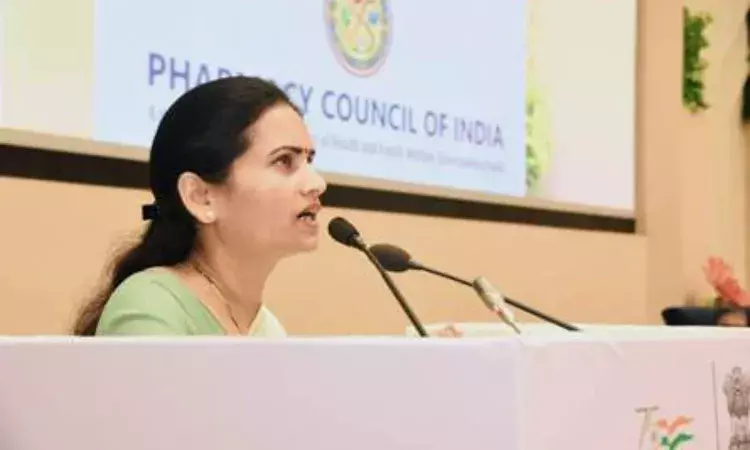- Home
- Medical news & Guidelines
- Anesthesiology
- Cardiology and CTVS
- Critical Care
- Dentistry
- Dermatology
- Diabetes and Endocrinology
- ENT
- Gastroenterology
- Medicine
- Nephrology
- Neurology
- Obstretics-Gynaecology
- Oncology
- Ophthalmology
- Orthopaedics
- Pediatrics-Neonatology
- Psychiatry
- Pulmonology
- Radiology
- Surgery
- Urology
- Laboratory Medicine
- Diet
- Nursing
- Paramedical
- Physiotherapy
- Health news
- Fact Check
- Bone Health Fact Check
- Brain Health Fact Check
- Cancer Related Fact Check
- Child Care Fact Check
- Dental and oral health fact check
- Diabetes and metabolic health fact check
- Diet and Nutrition Fact Check
- Eye and ENT Care Fact Check
- Fitness fact check
- Gut health fact check
- Heart health fact check
- Kidney health fact check
- Medical education fact check
- Men's health fact check
- Respiratory fact check
- Skin and hair care fact check
- Vaccine and Immunization fact check
- Women's health fact check
- AYUSH
- State News
- Andaman and Nicobar Islands
- Andhra Pradesh
- Arunachal Pradesh
- Assam
- Bihar
- Chandigarh
- Chattisgarh
- Dadra and Nagar Haveli
- Daman and Diu
- Delhi
- Goa
- Gujarat
- Haryana
- Himachal Pradesh
- Jammu & Kashmir
- Jharkhand
- Karnataka
- Kerala
- Ladakh
- Lakshadweep
- Madhya Pradesh
- Maharashtra
- Manipur
- Meghalaya
- Mizoram
- Nagaland
- Odisha
- Puducherry
- Punjab
- Rajasthan
- Sikkim
- Tamil Nadu
- Telangana
- Tripura
- Uttar Pradesh
- Uttrakhand
- West Bengal
- Medical Education
- Industry
Rise in Kayakalp facilities from 97 in FY 2015-16 to 13915 in FY 2021-22, MoS Health informs Lok Sabha

New Delhi: In a notable development of the Kayakalp facilities, the count of Public Health Facilities up to District Hospitals, has witnessed a substantial rise, soaring from 97 in the fiscal year 2015-16 to an impressive 13,915 in the fiscal year 2021-22.
The evolving landscape introduced a new thematic dimension in the criteria for these facilities in 2021-22, emphasizing the adoption of eco-friendly practices.
Adding to the transformative measures, the Kayakalp scheme has undergone a noteworthy transition, now being classified as an "incentive scheme." This initiative operates on dual fronts, encompassing Public Health Facilities up to District Hospitals and Central Government Hospitals. The expansion in the number of facilities underscores the government's commitment to enhancing public healthcare infrastructure, ensuring wider accessibility and improved services. The incorporation of an eco-friendly aspect reflects a growing emphasis on sustainable and environmentally conscious practices within the healthcare domain.
Also Read: Kayakalp Team pays visit to AIIMS Bhubaneswar
The Kayakalp scheme's reclassification as an incentive scheme underscores the intention to motivate and reward excellence in maintaining high standards of cleanliness, hygiene, and overall quality in public health facilities. This multifaceted approach aims to create a healthier, more sustainable healthcare environment at both district and central government levels.
For Public Health facilities upto district Hospitals, the assessment tool has a checklist arranged around eight thematic areas including Hospital/Facility Upkeep, Sanitation and Hygiene, Waste Management, Infection Control, Support Services, Hygiene Promotion, Cleanliness beyond hospital boundary wall and Eco-friendly facility. For Central Government Hospitals, the assessment tool has the following thematic areas including Hospital Upkeep, Sanitation and hygiene, Support Services, Waste Management, infection Control, Hygiene Promotion and Feedback Mechanism from Public on Cleanliness.
Also Read: Phagwara's Rajan Eye Care Hospital gets recognition under cleanliness survey
Sanchari Chattopadhyay has pursued her M.A in English and Culture Studies from the University of Burdwan, West Bengal. She likes observing cultural specificities and exploring new places.


